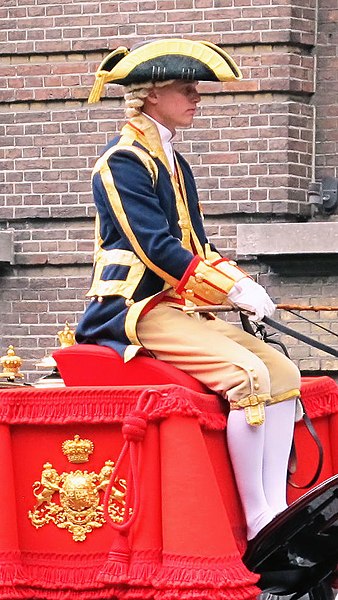Breeching was the occasion when a small boy was first dressed in breeches or trousers. From the mid-16th century until the late 19th or early 20th century, young boys in the Western world were unbreeched and wore gowns or dresses until an age that varied between two and eight. Various forms of relatively subtle differences usually enabled others to tell little boys from little girls, in codes that modern art historians are able to understand but may be difficult for the layperson to discern.
Flemish boy of 1625 in a dress with sewn in tucks to both layers of the skirt to allow for growth. The hair and hat are distinctively masculine, and he wears a sword or dagger (observer's left) and red coral beads, which were used for teething.
Boston, 1755–1760, boy and (probably) girl
Louis XIV and his unbreeched brother. In French royal portraits gender can be hard to tell, except by the absence of jewellery (1640s)
English boys (1670)
Breeches are an article of clothing covering the body from the waist down, with separate coverings for each leg, usually stopping just below the knee, though in some cases reaching to the ankles. Formerly a standard item of Western men's clothing, they had fallen out of use by the mid-19th century in favour of trousers.
Breeches are still worn as livery for special occasions in several European courts. Here, a coachman in the Netherlands wears them during Prinsjesdag, 2013.
Breeches as worn in the United States in the late 18th century: Elijah Boardman by Ralph Earl, 1789.
A pair of buckles for dress breeches. The T-hook of the buckle is inserted into a buttonhole located on the strap at the bottoms of the leg of the breeches. The end of the strap is slipped through, the prongs lowered and then the end slipped through the other side of the buckle.
Equestrian portrait of Prince Henry, Duke of Cumberland and Strathearn by David Morier around 1765.








